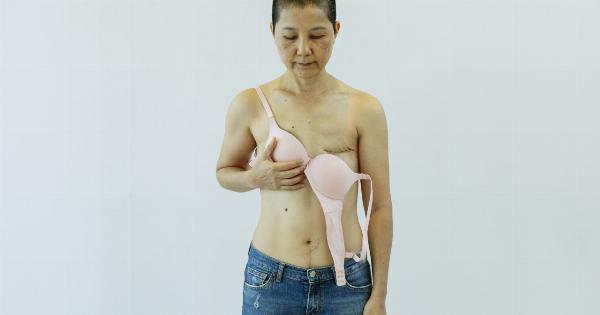Breast cancer has become a growing concern for women all over the world. According to the American Cancer Society, breast cancer is the second most common cancer among women in the United States, affecting one in eight women.
Many theories and rumors circulate about the causes of breast cancer, including the myth that wearing bras can increase the risk. In this article, we will investigate the truth behind this popular claim and explore the relationship between breast cancer and bras.
The Theory Behind the Bra-Breast Cancer Connection
The idea that bras can cause breast cancer has been around for several decades. The theory claims that wearing a bra restricts the flow of lymphatic fluid, which can result in a buildup of toxins and carcinogens in breast tissue.
This buildup, in turn, can lead to the development of cancer cells.
Furthermore, bras are said to create pressure on the breast tissue and alter the natural shape of the breast. This can lead to inflammation and damage to the cells, which can increase the risk of cancer.
The Research Behind the Theory
While the theory behind the bra-breast cancer connection may seem plausible, there is little scientific evidence to support it. Several major studies have been conducted to determine if wearing a bra can increase the risk of breast cancer.
A study published in the medical journal Cancer Epidemiology, Biomarkers & Prevention in 2014 found no significant association between bra wearing and breast cancer risk.
The study compared the bra-wearing habits of women with and without breast cancer and found no difference in the frequency or duration of bra use between the two groups.
Another study, published in the same journal in 2019, also found no significant association between bra wearing and breast cancer risk.
The study analyzed the bra-wearing habits of more than 1,500 women with breast cancer and compared them to a control group of more than 1,500 women without the disease. The study concluded that there was no evidence to support the claim that wearing a bra increases the risk of breast cancer.
Other Factors That May Increase the Risk of Breast Cancer
While wearing a bra may not be a significant risk factor for breast cancer, there are other factors that can increase the risk. These include:.
- Age: Women over the age of 50 are at a higher risk of developing breast cancer.
- Family history: Women with a family history of breast cancer are at a higher risk of developing the disease.
- Genetics: Certain genetic mutations, such as BRCA1 and BRCA2, are associated with an increased risk of breast cancer.
- Personal history: Women who have had breast cancer in one breast are at an increased risk of developing the disease in the other breast.
- Exposure to radiation: Women who have undergone radiation therapy to the chest area for other conditions, such as Hodgkin’s disease, are at an increased risk of developing breast cancer.
- Hormones: Women who have been exposed to high levels of estrogen, either through hormone replacement therapy or by starting their periods at an early age, are at an increased risk of developing breast cancer.
Conclusion
Despite the persistent rumors about the connection between bras and breast cancer, there is little scientific evidence to support the claim.
While wearing an ill-fitting bra may cause discomfort and lead to other health problems, it is unlikely to cause breast cancer. Women who are concerned about their breast health should focus on regular self-exams, mammograms, and a healthy lifestyle that includes a balanced diet and regular exercise.






























